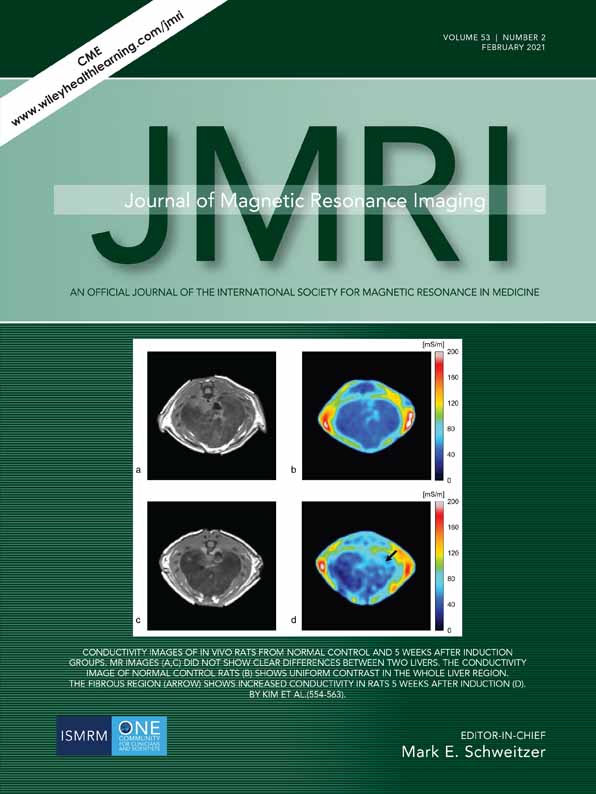Diagnostic Utility of the Simplified Perfusion Fraction for Identifying Myocardial Injury in Patients With Reperfused ST-segment Elevation Myocardial Infarction
Contract grant support: National Natural Science Foundation of China; Contract grant numbers: 81873886 and 81873887; Contract grant sponsor: Shanghai Municipal Education Commission-Gaofeng Clinical Medicine Grant; Shanghai Jiao Tong University School Of Medicine Double Hundred Outstanding Person Project; Contract grant number: 20191904; Contract grant sponsor: Shanghai Municipal Commission of Health and Family Planning Excellent Young Talent Program; Contract grant number: 2017YQ031; Contract grant sponsor: Shanghai Shenkang Hospital Development Center Clinical Research and Cultivation Project; Contract grant number: SHDC12018X21; Contract grant sponsor: Shanghai Science and Technology Innovation Action Plan, Technology Standard Project; Contract grant number: 19DZ2203800; Contract grant sponsor: Shanghai Jiao Tong University Medical Cross Project; Contract grant number: YG2017QN44.
Potential conflict of interest: Nothing to report.
Abstract
Background
Acute myocardial infarction (AMI) is a disease with high morbidity and mortality worldwide and the evaluation of myocardial injury and perfusion status following myocardial ischemia and reperfusion is of clinical value.
Purpose
To assess the diagnostic utility of simplified perfusion fraction (SPF) in differentiating salvage and infarcted myocardium and its predictive value for left ventricular remodeling in patients with reperfusion ST-segment elevation myocardial infarction (STEMI).
Study Type
Prospective.
Population
Forty-one reperfused STEMI patients and 20 healthy volunteers.
Field Strength/Sequence
3.0T MRI. The MR examination included cine, T2-short tau inversion recovery (T2-STIR), first pass perfusiong (FPP),phase sensitive inversion recovery (PSIR), and diffusion-weighted imaging (DWI).
Assessment
SPF values among different myocardium regions (infarcted, salvaged, remote, and MVO) and stages of reperfused STEMI patients as well as normal controls were measured. The diagnostic utility of SPF values in differentiating salvaged and infarcted myocardium was assessed.
Statistical Analysis
Independent t-test and the Mann–Whitney U-test. Logistic regression.
Results
SPF values in healthy controls were not significantly different than SPF values in the remote myocardium of patients (40.09 ± 1.47% vs. 40.28 ± 1.93%, P = 0.698). In reperfusion STEMI patients, SPF values were lower in infarcted myocardium compared to remote and salvaged myocardium (32.15 ± 2.36% vs. 40.28 ± 1.93%, P < 0.001; 32.15 ± 2.36% vs. 36.68 ± 2.71%, P < 0.001). SPF values of infarcted myocardium showed a rebound increase from acute to convalescent stages (32.15 ± 2.36% vs. 34.69 ± 3.69%, P < 0.001). When differentiating infarcted and salvaged myocardium, SPF values demonstrated an area under the curve (AUC) of 0.89 (sensitivity 85.4%, specificity 80.5%, cutoff 34.42%). Lower SPF values were associated with lower odds ratio (OR = 0.304) of left ventricular remodeling after adjusting for potential confounders with a confidence interval (CI) of 0.129–0.717, P = 0.007.
Data Conclusion
SPF might be able to differentiate salvaged and infarcted myocardium and is a strong predictor of left ventricular remodeling in reperfused STEMI patients.
Level of Evidence 2
Technical Efficacy Stage 2




